Sorted by date Results 1 - 25 of 66
Before you venture off on a cross-country flight, what is your pre-flight planning routine? Do you watch the local weather, add just enough fuel to legally reach your destination then blast off? Or do you call Flight Service for a standard briefing, analyze the weather yourself, and go through all of the steps you were taught in initial flight training? Most people would probably fall somewhere in the middle of these two scenarios. What follows is a discussion about how our pre-flight preparations can mitigate the chances for an accident...
It seems as though it has been more windy than normal so far this year. Many days the wind has blown in excess of 20 knots. And I’ve had maybe one occurrence where it has blown directly down the runway. As pilots we’re always assessing the wind. A prudent pilot will consciously make a decision every time he flies if the winds are within his personal minimums. The two main factors when deciding about how much wind to fly in are the airplane and the pilot. Ask most pilots how much crosswind their airplane can handle and they’ll tell you the n...
Aviation accidents have been getting quite a bit of attention this year. General aviation suffers about three accidents per day, with a couple hundred fatalities per year. This number hasn’t gone down nearly enough. There is a call for action however. The National Pause for GA Safety is an initiative to encourage pilots to do at least one thing, in the next six months, that sharpens their flight skills. Most of the big aviation groups are behind this effort, and you can earn Wings credits for your participation. Check out gasafe.org for t...
I have a way to increase your proficiency, it only takes 10 minutes per session, and its free! Interested? To set it up, you’ll need to get a piece of paper and write down different items. Write down emergencies – engine fire during start, engine failure on downwind, smoke in the cockpit, etc. Then tear those pieces of paper into small sections and put them in a bowl. Place your checklist next to it if you can. Try to commit to grabbing one emergency or situation every few days. Visualize it happening to you. Then see how much of your che...
Spring is imminent, and that means more folks out flying, strong winds, bumpy rides, and lots of fun. If its been awhile since you’ve flown, it would be a good idea to do some recurrent training first. There are many places online to take part in some education that is both interesting and relevant to you. Grab a cup of coffee and attend a Wings seminar or two. Then find your favorite CFI and challenge yourself to a fun recurrent flight program. So many pilots think its gotta be boring and consist of the same old stuff. It doesn’t. Make it fun,...
Much is being written about the fate of the 896 VORs that have populated the continental US since the mid-last century. Since the introduction of satellite navigation, it has become apparent that VORs have become obsolete and are destined for the chopping block. If you’ve been nodding your head in agreement so far, you’re in for a surprise. In the field of aviation, the inherent limitations of VOR navigation are well known. With the introduction of RNAV, the ability to fly DRCT-TO is a huge advantage, not to mention the ability to do so wit...
As you may have seen in a recent safety column, I attended an aircraft crash survival course given by the FAA at the Civil Aerospace Medical Institute. In that course, one of the instructors gave an interesting statistic. If you crash and you have filed a flight plan, the time to rescue is about 24 hours. If you crash without a flight plan, the average time to rescue is 3 days! You might be thinking that doesn’t sound right. Looking at our great state of Minnesota, we do have some very sparsely populated areas with dense forest. If you’re thi...
Have you ever been on short final and had an aircraft pull out on the runway in front of you, causing you to go around? How about coming in on a half mile final at a towered airport and an aircraft calls for takeoff clearance? Do they really think they will get cleared for takeoff with someone almost ready to land? Have you been number one at the line, patiently waiting for the aircraft on final to land before you call ready, and the airplane behind you in the runup calls ready? We’ve all been either the recipient or the giver of these e...
If you’re looking for a valuable training experience to further your aviation knowledge, have I got a deal for you! And its free! The Civil Aerospace Medical Institute (CAMI), located on the Mike Monroney Aeronautical Center in Oklahoma City – the training campus for the Federal Aviation Administration, offers two different courses for pilots. The first course is aircraft crash survival. The course begins with a classroom session that discusses realistic timeframes for rescue and some basic equipment to have on your person and in the aircraft....
Has your club or organization been looking for another reason to fly for a purpose? If so, then you may be interested in the National Weather Service program called Weather Ready Nation Ambassadors. This program encourages groups to be proactive in communicating with the National Weather Service, which is always a good thing for pilots. Examples of services that flying clubs could provide to the NWS are photos of flood waters, snow depth, straight line wind damage, etc. The NWS relies on the public for reports of weather related damage and who...
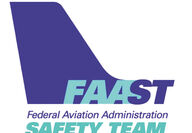
As you go through your flying career, whatever flying from GA to Part 121, there is always the checklist! Some pilots have said "I've owned my plane for years and have everything memorized." Or the Part 135 pilot that had a great career with a major and now flies smaller planes and feels they don't really need a check list every time. What if you are at a busy airport and there are planes lined up behind you? You just flew last week, you feel like you remember it well. Yes, you do, but how do...
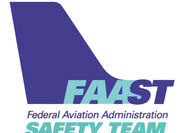
Often, as pilots, we hear that upon earning our Private Pilot License (PPL) we now have a license to “learn.” We are, hopefully, always learning. Every experience teaches us something. There’s an excellent website https://www.boldmethod.com/ which has numerous six question quizzes to test your knowledge on various subjects related to aviation. One idea might be to set a goal to access the website on the first day of every month and get your training hat on. Just like doing “Wordle” everyday...
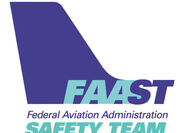
Think back to the last time you practiced engine failure procedures. Was it your most recent FAA checkride or Flight Review? Then ask yourself how PROFICIENTLY you'd perform today if your engine suddenly stopped making that wonderful growling noise. As aviators, we have a responsibility to our passengers, the aircraft owner, and ourselves to be skilled in the art of handling an engine failure. Establishing this ability in training is one thing. MAINTAINING this ability requires regular...
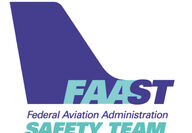
Not all aircraft owners have had anyone teach them about owning an airplane. I always tried to pass on some of that knowledge as I instructed, but many pilots lack a mentor in that area. One of the bigger issues I see is how people treat their aircraft after maintenance. It doesn't matter if it was in the shop for engine work or avionics, the return to service should be methodical and thorough. So many folks show up, grab the logbooks, and off they go into the wild blue without a second...
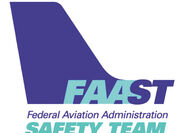
The pilot report, or PIREP, is an often appreciated bit of information, but how often do you actually submit one? PIREPs are, generally, only useful in a given area and for a small amount of time. Knowing this information, it is important to send them in often to aid your fellow pilots. It also helps ATC, meteorologists, accident investigators, and more. The next time you find cloud layers or turbulence, or some lovely smooth air in an otherwise sea of turbulent sky, consider filing a PIREP....
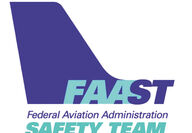
It's no wonder that students become frustrated with controlling an aircraft when there doesn't seem to be consistency between flight control inputs and aircraft response creating thoughts and comments such as, "I'm never going to get this." Learning to fly might be less onerous if students understood that flight controls have a unique purpose in each phase of flight. Applying the same inputs to ailerons, rudder and elevator, no matter which "Phase" an aircraft is in is where things become...
Inappropriate bounced landing responses can lead to spectacular (and pricey) landings! You must avoid stalling and avoid a porpoise. (No, Flipper is not on the runway!) First, if you bounce EXCESSIVELY or you’re just not comfortable, execute an immediate go-around. Good pilot judgement is required when deciding whether or not to continue landing after bouncing. Porpoising can occur if you continue the landing and you relax back pressure after bouncing. The immediate loss of lift will rapidly plummet you toward the runway. You then counter w...
One of the simplest tasks in aviation can also be one of the most overlooked…tire care. Our tires spend most of their time not turning, whether sitting on the ground or flying in the air. One would assume that they should require very little attention or maintenance because of this fact. Well, there is a hint of truth to this thought process. However, when you think of the times when the tire is needed during flight ops (taxiing, takeoff and landing), we realize that we really need those tires to do their job well. There are many sources of i...
With the new ADS-B mandate taking effect last year, many people have recently upgraded their aircraft to include ADS-B Out. This meets the requirement but may not be the absolute best outcome when trying to increase your safety. As with many things, aiming for the minimum often leaves valuable resources on the table. This summer I did a few cross-country flights around Minnesota. There was a lot of smoke and haze, and the visibility was terrible. It’s still easily VFR but not great visibility and adds a layer of complexity to spotting t...
Among my many tools is a 12-pound splitting maul (half sledgehammer/half axe). Many of my larger tools hang on the garage wall next to my car. Except for the splitting maul. Why is that? I occasionally bump into one of the tools and it falls down. Usually, the worst thing that happens is it lands on floor or hits the car doing very little damage. If the splitting maul falls on the car, it's going to do serious damage. If, worse yet, it lands on something harder than the car (like my head), it might get broken! The maul sits, with 99% of its...
“Money is the the root of all evil.” Did you notice the extra “the” in that sentence? Expectation Bias led us to expect the same familiar phrase. This concept can apply in many aviation situations such as the following: Coming in from the south and landing east at Flying Cloud, you would expect to land on the long SOUTH parallel, 10R. However, tower clears you to land on 10L, the NORTH parallel. You read back “Cleared to land 10L” but then proceed to land on 10R. This has actually happened and the pilot was even aware of the clearance t...
Although we can dream, there is no such animal as a perfect pilot. It’s a myth, much like strong tailwinds roundtrip! Consider this, though: if you STRIVE for perfection and fall short, you land in a very good, safe place making you a more competent, safe, and efficient aviator. Years ago, the Northwest Airlines training department promoted this Perfect Pilot concept to its pilot group. They strongly encouraged us to develop a mindset that sought perfection rather than adequacy. Think of a flight as a perfect square hunk of granite. If you f...
Everyone likes having their little toys. I feel, as pilots, we are especially attracted to new toys. The latest iPad mount for the cockpit, new avionics, a better headset, the list goes on. I am guilty of this as well. I have so many books and headsets and flight bags and kneeboards. However, I did recently add something to my pilot tools that I am oddly excited about: fire resistant clothes. Let me explain my reasoning. My flying attire has always favored the functional. No sandals, no synthetic fabric, nothing that restricts movement. But...
“Nice landing.” We sometimes hear that from passengers or fellow pilots after we greased it in with a gusty cross-wind, or pasted the mains on the numbers and made the first turnoff. However, when is the last time someone complimented you on your takeoff? Probably never. Like Rodney Dangerfield, takeoffs “get no respect.” This is unfortunate, because a well-executed takeoff requires good planning and technique to gracefully transition an aircraft from a gangly ground machine to a graceful air vehicle. When comparing the effect the wind has on...
If we wish to navigate through space with a level of precision, it is necessary to determine numbers such as: Top of Descent, Required Rate of Descent, and other information we usually have to look up or plug into our EFB or E6B. For some situations a “That-Looks-About-Right” calculation will help to determine if our decision process is on the right track or needs further scrutiny for safety or regulatory compliance. For example, if you’re at the airport and would like to get an idea how strong the wind is, a wind of 8-10 knots will regis...